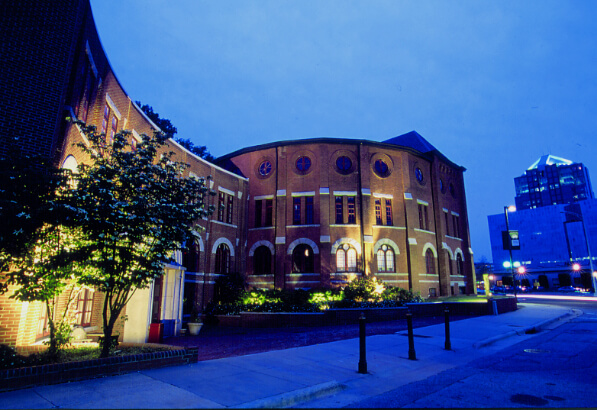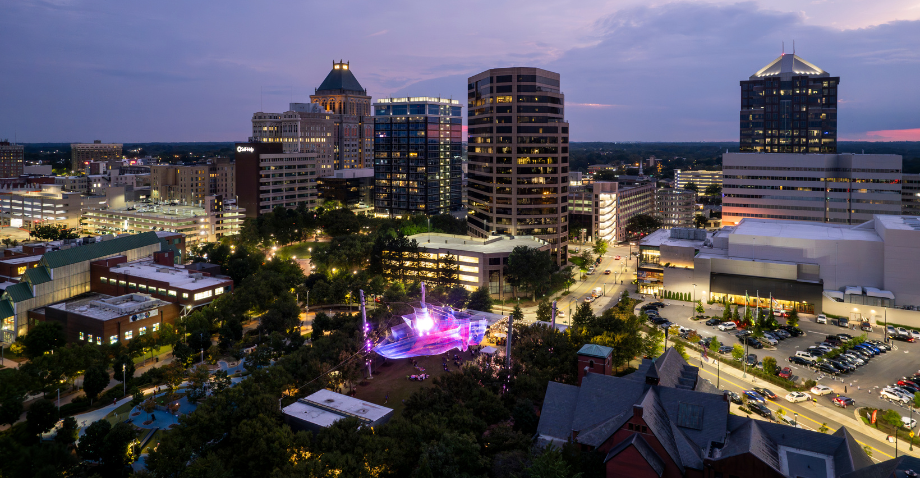
Healthcare in Greensboro expanded through the years. Its first hospitals were established to treat victims of the Civil War and were housed in churches and warehouses. Today, the nationally recognized Cone Health System gives patients access to the latest developments in medical care from their first moments of life through later years.
Early Beginnings

- Greensboro’s first hospitals were churches and warehouses turned into hospitals to treat the wounded from one of the Civil War’s last major battles in Bentonville.
- In the late 1800s, several small hospitals treated the sick and injured in converted houses downtown. During that period, a trend ensued for doctors to make house calls to treat the sick and injured.
St. Leo’s Catholic Hospital
- Greensboro’s first modern hospital opened in 1906 as St. Leo’s Catholic Hospital.
- It was operated by the Sisters of Charity and built at a cost of $125,000 in a magnificent four-story, brick structure that took up a block between Summit Avenue and what’s now Sullivan Street.
- St. Leo’s, which had a nursing school, gained a reputation for quality.
- One of its most famous surgeries occurred in 1914. Farmer Jasper Moody was brought to St. Leo’s for surgery while the famed Charles and Will Mayo of the Mayo Clinic were visiting. The Mayo brothers performed the first gastrointestinal bypass in the United States. They then performed a second operation to remove a grapefruit-size tumor from Moody.
- Then about 50, Moody went back to farming at his home in Tick Creek and lived for another 20 years.
Moses H. Cone Memorial Hospital
- Moses H. Cone and his brother Caesar founded Cone Mills in the 1890s. Upon his death in 1908, Moses left nearly $10 million to build a hospital in Greensboro on land extending outside of downtown. His will stipulated the money couldn’t be spent until Cone’s wife, Bertha Landau Cone, died.
- Even without a building, the hospital formed a board of directors that met for years. Mrs. Cone lived until 1947.
- Moses Cone Memorial Hospital opened in 1953, causing St. Leo’s and Emanuel Sternberger Mansion to close. Since its opening, construction to expand Moses Cone has been constant. The original building is about three times its initial size, and the campus includes an emergency care center, a rehabilitation center, the Women and Children's Hospital at Moses Cone, and parking decks.
- Cone also bought the original Humana Hospital, a chain hospital that opened on Green Valley Road in the 1960s. The location operated under the name Woman’s Hospital where all babies were born until it closed in 2020.
- In 1996, Cone and Wesley Long merged to create the Cone Health Care System. The new arrangement brought additions to Wesley Long, including a cancer center.
- Cone now owns the Annie Penn Hospital in Reidsville, the LeBauer Group, one of Greensboro’s largest private practices in the city, and other medically related businesses.
- For years, the biggest private employer in Greensboro was Cone Mills. Cone Mills is all but vanished, as is the city’s textile industry. But today the largest private employer, with more than 11,000 employees, is Cone Health, which spans more than 100 locations, including five hospitals, four ambulatory care centers, three outpatient surgery centers, seven urgent care centers, one retirement community, and more than 120 physician practices.
Other Hospitals
- Near the turn of the 20th century, Keeley Institute for alcoholics and drug addicts opened.
- Piedmont Memorial Hospital opened in 1925 in a former YMCA. The hospital had a good reputation, but incoming emergency patients found little privacy. The hospital closed in 1966.
- The Emanuel Sternberger Mansion on Summit Avenue became a hospital for women and children in 1930.
- The Guilford County Tuberculosis Sanitarium operated from 1924-55 on a bucolic campus in Jamestown. The site is now the main campus of Guilford Technical Community College.
- In 1948, when Guilford County was the epicenter of a national polio epidemic, volunteer masons, roofers, and businessmen built a polio hospital in 90 days where East Bessemer Avenue and Huffing Mill Road intersect. The hospital closed in 1961 after polio vaccines all but wiped out the disease.
- In the 1970s, Charter Hospital for the mentally ill opened.
- L. Richardson Memorial Hospital opened in 1927 for the city’s black community. The community had a small hospital before, but money was given by the Richardson family, heirs to the Vick Cold remedy fortune, to build a beautiful stucco building in east Greensboro.
- White doctors saw patients there, but black doctors were barred from white hospitals until a black dentist, Dr. George Simkins, sued in the 1960s. The case went all the way to the U.S. Supreme Court. In a landmark national ruling, the court stated any hospital receiving federal funds could not discriminate against patients and doctors.

